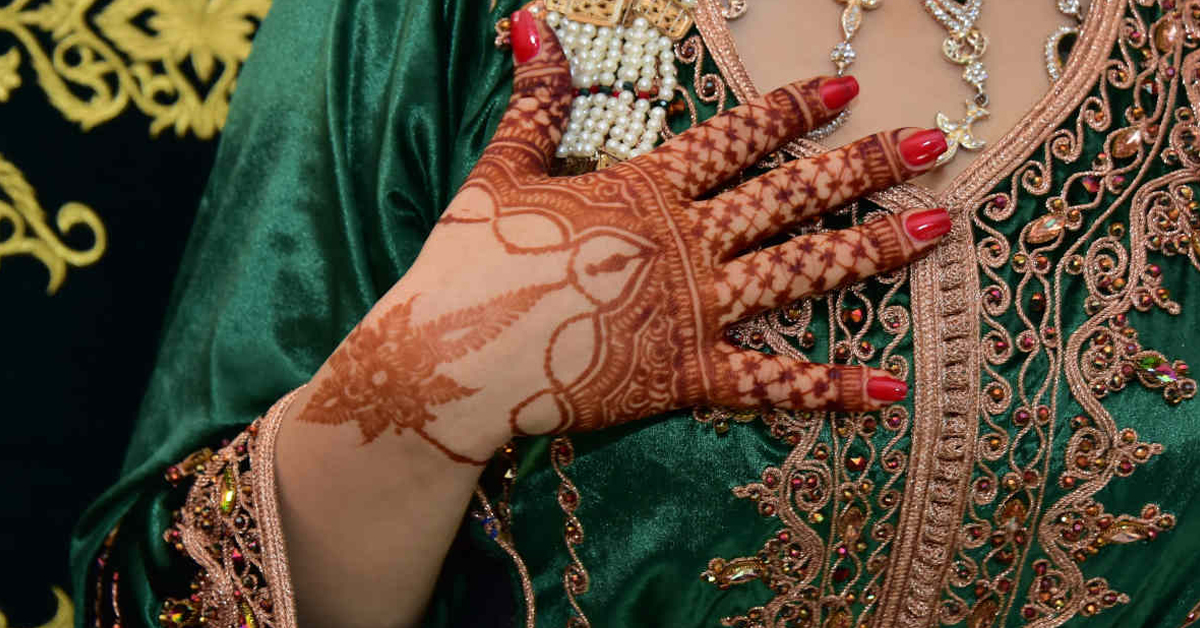Moroccan wedding is a beautiful blend of tradition and modernity, reflecting the country’s vibrant culture and deep-rooted beliefs. Rich in customs and rituals, these celebrations are a visual and sensory journey that offers a glimpse into the essence of Moroccan life. While steeped in tradition, modern influences have also shaped the way weddings are celebrated today. In this article, we’ll take a closer look at the cultural significance of Moroccan weddings and the top modern trends observed in wedding celebrations across the country, also the Moroccan wedding dress.
Key Takeaways
- Moroccan weddings blend tradition with modern trends
- They are rich in customs and rituals that reflect the country’s culture
- The modern influences have enabled personalized touches and the infusion of Western wedding traditions
- Multi-day wedding festivities and pre-wedding events are integral parts of Moroccan weddings
- Modern Moroccan wedding couples come from diverse backgrounds and create unique love stories
The Essence of Moroccan Wedding Traditions
Moroccan wedding traditions are deeply rooted in culture and carry significant meaning for families and communities. These customs have been passed down through generations and hold an essential place in modern Moroccan wedding celebrations. The essence of these traditions lies in the importance of family involvement, religious ceremonies, and traditional rituals.
In Moroccan culture, family is central to wedding celebrations. The family’s involvement begins long before the wedding and extends beyond the celebration itself. Family members play a crucial role in organizing and hosting the pre-wedding events, which are vital components of Moroccan wedding festivities.
Religious ceremonies hold immense significance in Moroccan weddings. The wedding ceremony itself often takes place in a mosque and is conducted by an imam. The bride and groom are united through a religious ceremony that includes the exchange of vows and blessing from family members and the community.
Traditional rituals are essential elements of Moroccan wedding celebrations. These customs reflect the rich cultural heritage of the country and are a symbol of the couple’s history and identity. Traditional rituals include the Moroccan henna party, amaria, and the traditional procession, which mark the journey to the wedding venue.
The beauty of Moroccan wedding traditions lies in the blending of ancient customs with contemporary elements to create a memorable and unique celebration that reflects the couple’s personality and style. These customs embody the cultural significance and heritage of the country, bringing together families and communities in a celebratory unity.
Designs and Decor: Aesthetics That Capture the Heart
When it comes to Moroccan weddings, the bride and groom spare no expense in creating a visually stunning event. Moroccan wedding designs and decor are renowned for their use of vibrant colors, intricate patterns, and traditional motifs that come together to create a captivating ambiance.
One of the most striking features of Moroccan wedding decor is the use of bold and bright colors. Rich jewel tones like emerald green, ruby red, and sapphire blue are commonly featured in table settings, textiles, and decorative accents. The use of metallics, including gold and silver, also adds a touch of glamour and sophistication.
Intricate patterns and textures play a significant role in Moroccan wedding designs. From the traditional geometric motifs featured in zellige tilework to the intricate arabesque designs found in lighting fixtures and furnishings, every detail is considered. It’s not uncommon to see patterns repeated throughout the wedding decor, from table runners to the henna designs on the bride’s hands.
The incorporation of traditional Moroccan motifs also adds a layer of cultural significance to the wedding decor. Elements such as the hamsa, a symbol of protection, and the evil eye, believed to ward off negative energy, can be found in various forms of decor.
Overall, Moroccan wedding designs and decor are a true feast for the senses, capturing the heart with their intricate details and vibrant colors.
Henna Design Inspiration for Moroccan Weddings
| Henna Design | Description |
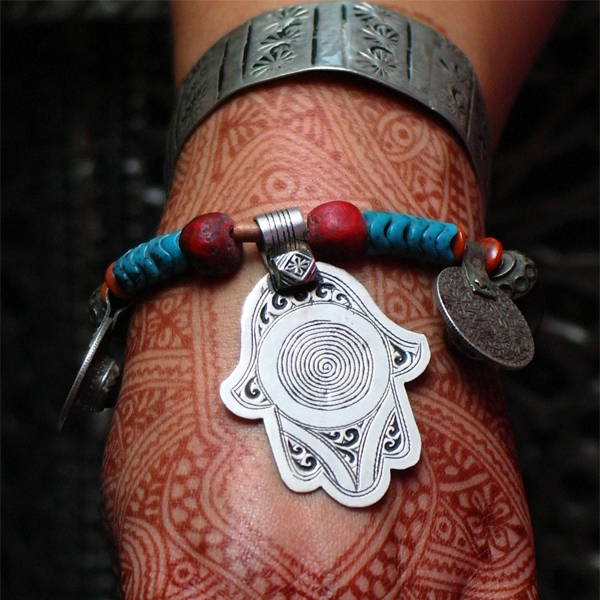 |
This intricate design features traditional Moroccan motifs, including the hamsa and evil eye. The use of geometric patterns and delicate details make for a stunning henna design. |
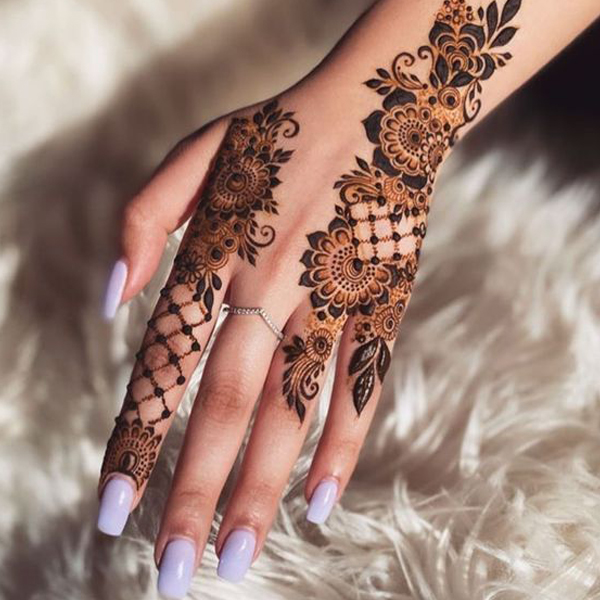 |
This bold henna design incorporates vibrant colors and intricate details to create a unique look. Geometric shapes and floral elements come together to create a one-of-a-kind design. |
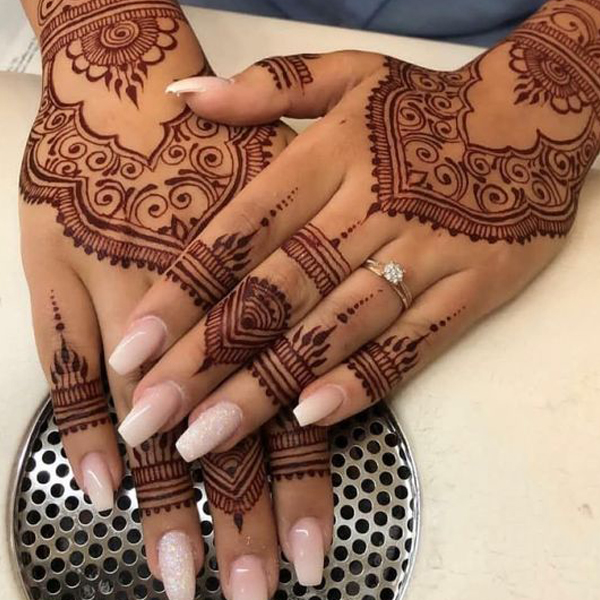 |
Simple yet elegant, this henna design features a delicate floral motif on the bride’s hand. The use of negative space creates a modern look while still reflecting traditional Moroccan henna designs. |
The henna designs at Moroccan weddings are another element of design and decor that showcases intricate patterns and traditional motifs. These designs often feature geometric shapes, floral elements, and the use of negative space to create a modern yet traditional design.
Whether it’s the striking use of color, intricate patterns, or traditional motifs. Moroccan wedding designs and decor offer a captivating ambiance that is unique to these celebrations.
Dresses and Attire: Embodiments of Elegance and Tradition
When it comes to Moroccan weddings, the moroccan style dress worn by the bride and groom is steeped in cultural significance. Traditional clothing has been passed down through generations of Moroccan families, with each article of clothing representing a region or tribe, and reflecting the unique identity of the wearer.
For brides, the traditional attire includes the Moroccan wedding dress (kaftan), takchita, and djellaba, all of which are adorned with luxurious fabrics, intricate embroidery, and dazzling jewels. The Moroccan wedding dress (kaftan) is a floor-length moroccan style dress with wide sleeves, often made of silk or satin, while the takchita is a two-piece garment consisting of an embroidered tunic and a flowing skirt. The djellaba, meanwhile, is a long, loose cloak with a pointed hood, usually made of warm wool.
Traditional Attire |
Image |
Kaftan |
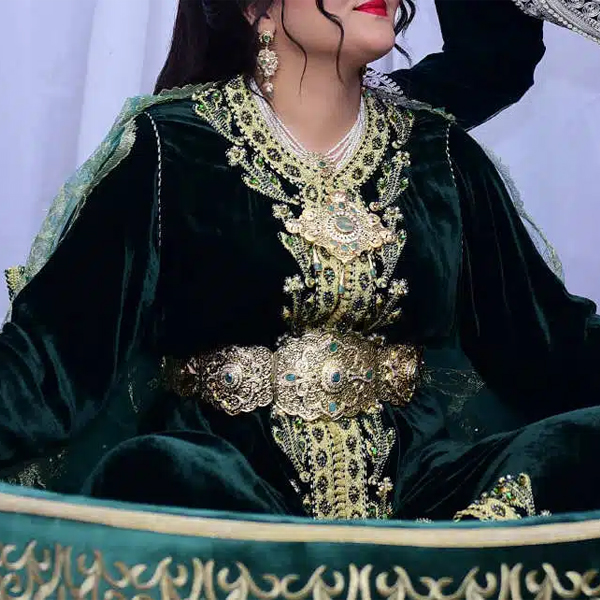 |
Takchita |
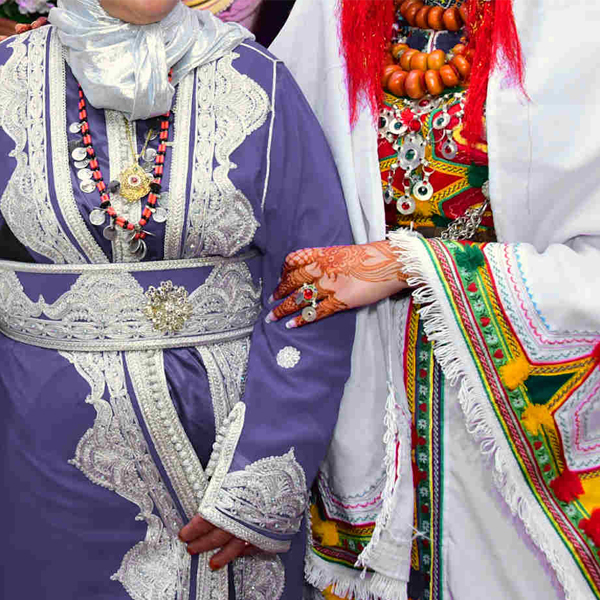 |
Djellaba |
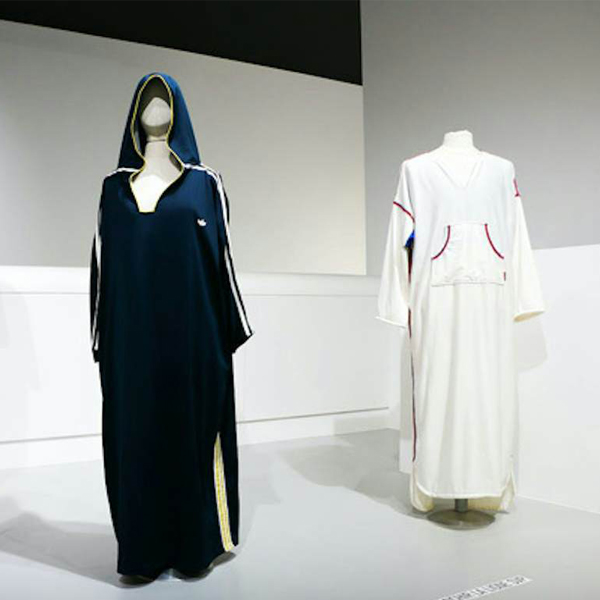 |
For grooms, the traditional attire consists moroccan style dress. The jellaba (a long robe), the gandoura (a shirt), and the saroual (pants). Accessories such as a fez hat, a dagger, and a woven sash complete the outfit.
While these traditional styles have endured and continue to be celebrated, modern fashion trends have also made their mark on Moroccan bridal fashion. Contemporary designers have added their own flair to traditional bridal wear, with new designs and colors that honor Moroccan heritage while reflecting current fashion trends.
The result is a breathtaking array of Moroccan wedding dress that embody both elegance and tradition, reflecting the rich cultural heritage of Morocco.
The Culinary Delights: A Feast for the Senses
The richness of Moroccan wedding cuisine is a testament to the country’s diverse culinary traditions. The vibrant and flavorful dishes served during weddings are a highlight of the celebration, and communal dining is an essential aspect of the festivities.
Among the traditional dishes served at Moroccan weddings, tagines are a staple. These slow-cooked stews are made with a variety of meats, vegetables, and spices like saffron, cumin, and ginger. Another popular dish is couscous, made with semolina grains and often served with vegetables and succulent meats. Pastillas, savory pies made with layers of phyllo pastry and stuffing that can consist of pigeon, chicken, or seafood, are also enjoyed during these occasions.
The presentation of food is equally important as the taste, with dishes served on intricately designed platters and accompanied by fresh herbs and fruits. A Moroccan wedding feast is a true delight for both the eyes and the palate.
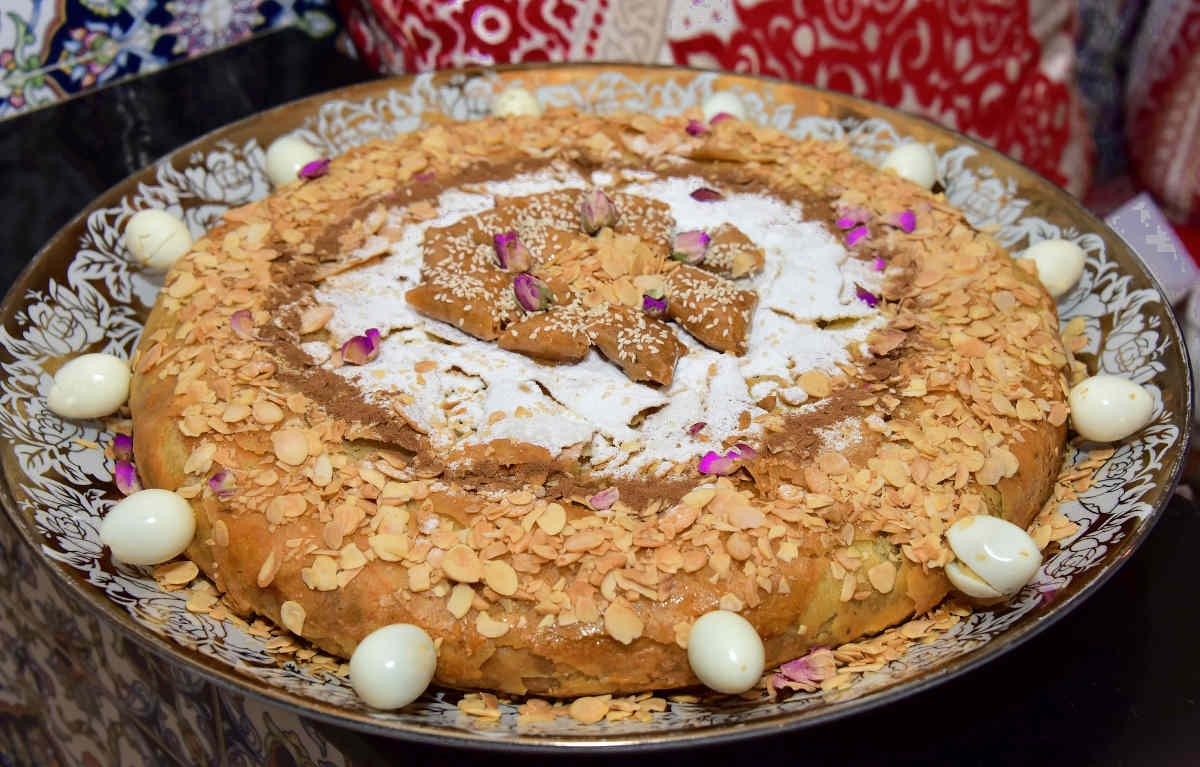
Music and Dance: Celebratory Rhythms and Mesmerizing Moves
Moroccan wedding celebrations wouldn’t be complete without the lively beats of the traditional music and the captivating dance forms. It is said that music and dance can bring people closer together and that they are essential elements in any Moroccan wedding.
The traditional music is played on a range of instruments, including the oud, a stringed instrument similar to a lute, and the darbuka, a type of drum made of clay or wood covered with goatskin. The music consists of cheerful and celebratory rhythms that are sure to get your feet tapping.
Along with the music, traditional dances are an integral part of Moroccan wedding celebrations. Ahidous is a popular group dance form performed by both men and women. The dance involves forming circles that move around a central point while clapping and synchronizing their movements. Another popular dance form is Guedra , a ritual dance that involves delicate hand and arm movements and is performed by a solo female dancer.
Musical Instruments of Moroccan Wedding
| Instrument | Description |
| Oud | A stringed instrument similar to a lute. |
| Darbuka | A type of drum made of clay or wood covered with goatskin. |
| Qraqeb | A type of castanet made of metal typically used in Gnawa music. |
| Bendir | A type of frame drum often used in traditional music. |
Whether you’re participating in a group dance or admiring a solo performance, the music and dance forms of Moroccan weddings are sure to leave you mesmerized and feeling part of the celebration.
Henna: Intricate Bridal Artistry
One of the most captivating elements of Moroccan weddings is the bride’s henna designs, which are considered symbols of good luck, fertility, and warding off evil spirits. Henna has been an integral part of North African and Middle Eastern cultures for centuries, and its use during weddings is still widely practiced today.
The application process for Moroccan wedding henna is a delicate art that requires precision and patience. Intricate designs are created, typically on the bride’s hands and feet, using a cone filled with henna paste. The designs range from geometric patterns and floral motifs to intricate Arabic calligraphy and symbolic representations.
Bridal artistry is a unique form of self-expression that showcases cultural beliefs and traditions. The intricate designs of Moroccan wedding henna reflect the bride’s personality and cultural identity. It is also an occasion for the bride and her female family members and friends to bond, share stories, and exchange wedding advice.
The design process can take several hours or even an entire day to complete, depending on the complexity of the design. The dye may take anywhere from one to three days to develop fully, during which the bride is expected to rest and avoid water to make the design last longer.
Overall, Moroccan wedding henna is more than just an aesthetic addition to the bride’s appearance; it is a sacred and meaningful tradition that has been passed down through generations. It serves as a symbol of unity, good luck, and love, reflecting the celebratory spirit of the wedding festivities.
Wedding Festivities: Multi-Day Celebrations
The wedding festivities in Morocco are known for their joyous and elaborate nature, with celebrations often spanning multiple days. These multi-day celebrations are a reflection of the importance placed on weddings in Moroccan culture. Serving as a symbol of love, family, and community unity.
Pre-wedding events like the Moroccan henna party and traditional processions mark the journey of the bride and groom towards the wedding venue. The Moroccan henna ceremony, or Laylat Al Henna, is a particularly important pre-wedding event. Where intricate henna designs are applied to the bride’s hands and feet. It is a festive occasion where family and friends gather to celebrate the bride’s beauty and offer blessings for the couple’s future.
On the day of the wedding, traditional processions are held, with the bride and groom transported to the wedding venue amidst music, dance, and fanfare. These processions are a spectacular display of Moroccan culture, with ornate decorations, beautiful costumes, and traditional music adding to the celebratory atmosphere.
Overall, Moroccan wedding festivities are a testament to the rich cultural heritage of the country, with pre-wedding events and traditional processions adding to the joyous celebration of the union of two individuals.
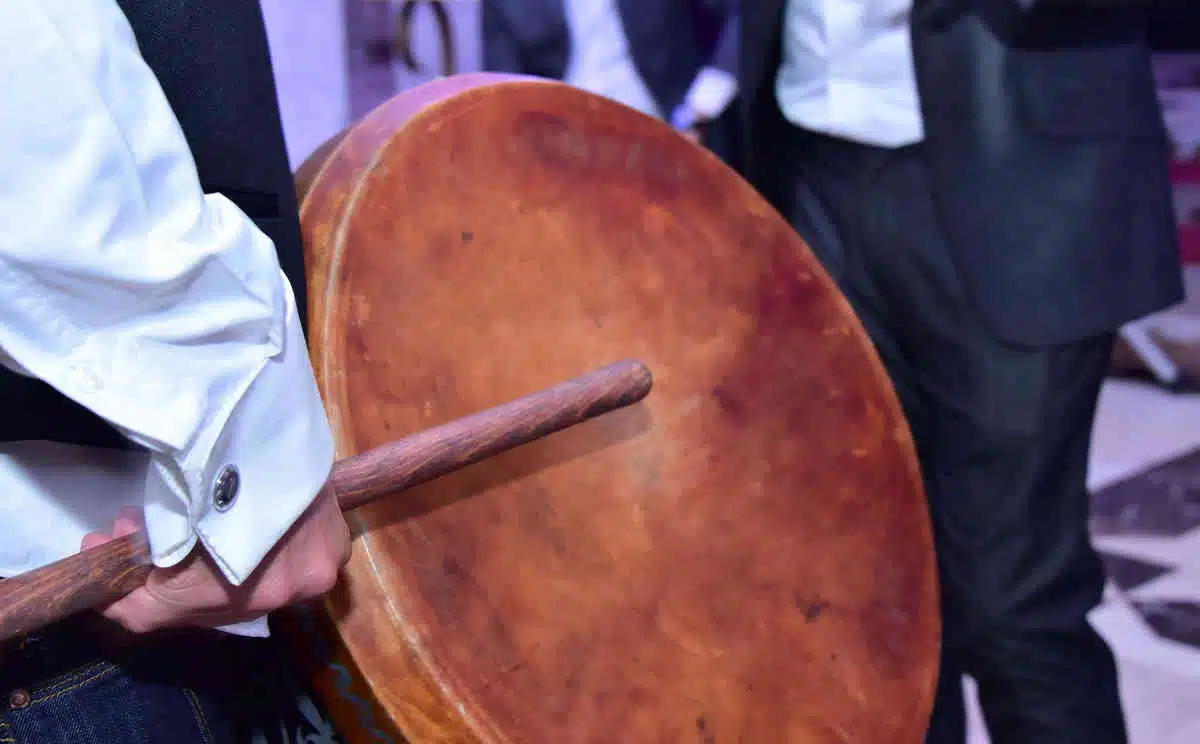
Modern Influences: Infusing Contemporary Elements
In recent times, Moroccan wedding ceremonies have been heavily influenced by modern trends. Couples are incorporating Western wedding traditions with personalized touches to create unique celebrations that reflect their personalities. This blending of customs has allowed for the inclusion of contemporary elements that have transformed the Morrocan wedding into a modern masterpiece.
| Contemporary Touches | Description |
| Destination Weddings | Couples are opting to celebrate their union in picturesque locations around the world, adding a touch of elegance to their nuptials. |
| Personalized Decor | Brides and grooms are incorporating elements that hold special meanings such as photos, unique centerpieces, and specific colors. |
| Modern Music | Contemporary music has been introduced during the reception to blend with the traditional Moroccan music. |
| Custom Invitations | Modern invitations are designed with sleek and elegant styles made to reflect the couple’s taste and style. |
These contemporary influences have created a beautiful amalgamation of old and new, providing a fresh take on the Moroccan wedding. Brides and grooms are embracing change without compromising the cherished customs that make Moroccan weddings truly special.
Intertwining Love Stories: Modern Moroccan Wedding Couples
The beauty of Moroccan weddings lies in the unique love stories that come together to create memorable celebrations. Modern Moroccan wedding couples often have intercultural backgrounds, making their wedding ceremonies a blend of diverse traditions and practices. These weddings celebrate love that transcends cultural boundaries, bringing together families and communities in celebratory unity.
“Our love story is a testament to the power of overcoming cultural differences. With a Moroccan father and a French mother, we knew our wedding had to be a blend of both cultures. From the Moroccan henna party to the French-inspired wedding cake. Our wedding was a beautiful representation of our shared love for one another and our blended families.”
– Fatima and Julien, a modern Moroccan-French couple
Modern Moroccan wedding couples infuse their ceremonies with personal touches that reflect their unique love stories. From incorporating a traditional family recipe into the wedding menu to displaying personal photos in the wedding decor. These weddings celebrate the beauty of individuality combined with cultural traditions.
Intercultural marriages also bring a new perspective to Morrocan wedding customs. The blending of cultural practices can create new and exciting traditions that honor both families’ backgrounds. For example, a Moroccan-Indian couple may incorporate Indian wedding rituals, like a Mehndi ceremony or Baraat procession, into their Moroccan wedding celebration.
Conclusion
In essence, Moroccan weddings are a beautiful representation of the cultural blend and celebratory unity that define the country. With modern trends infused with age-old traditions, these weddings have captivated the hearts of many. Through this article, we have explored the significance of family involvement, religious ceremonies, traditional rituals, vibrant colors, intricate patterns, exquisite fashion, diverse cuisine, lively music, captivating dance forms and auspicious henna designs. That encapsulate the essence of Moroccan weddings.
The importance of multi-day celebrations and the integration of Western wedding traditions and personalized touches have given these events a unique touch. Nevertheless, the cultural significance of these ceremonies has remained steadfast, uniting families, and building communities.
With Moroccan wedding couples embracing intercultural marriages. These celebrations continue to evolve with new love stories woven into the tapestry of the age-old culture. It is evident that Moroccan weddings are not just a celebration of love, but a celebration of life and unity that transcends borders.
FAQ
What are Moroccan weddings known for?
Moroccan weddings are known for their rich cultural traditions and the blending of past traditions with modern trends.
What are some of the traditional customs in Moroccan weddings?
Moroccan weddings involve extensive family involvement, religious ceremonies, and traditional rituals that have been passed down through generations.
What is the significance of Moroccan wedding designs and décor?
Moroccan wedding designs and décor are visually stunning, featuring vibrant colors, intricate patterns, and traditional motifs. That create a captivating ambiance.
What is the traditional moroccan wedding dress and attire worn in Moroccan weddings?
The Moroccan style dress includes: kaftans, takchitas, and djellabas that reflect cultural identity and preserve age-old fashion styles.
What can I expect from Moroccan wedding cuisine?
Moroccan wedding cuisine offers a feast for the senses with its diverse range of traditional dishes, such as tagines, couscous, and pastillas.
What role does music and dance play in Moroccan weddings?
Moroccan weddings are filled with celebratory rhythms and mesmerizing dance forms. Featuring instruments like the oud and darbuka, as well as traditional dances like the ahidous and guedra.
What is the significance of henna in Moroccan weddings?
Henna holds great cultural significance in Moroccan weddings. With intricate designs applied to the bride’s hands and feet symbolizing beauty, auspiciousness, and the bride’s transition into married life.
How long do Moroccan wedding festivities typically last?
Moroccan wedding festivities are multi-day celebrations. It can include pre-wedding events like the Moroccan henna party and traditional processions leading up to the main wedding ceremony.
How have modern influences impacted Moroccan weddings?
Modern influences have brought contemporary elements to Moroccan weddings. Including the incorporation of Western wedding traditions, personalized touches, and trends like destination weddings.
Can you share any stories of modern Moroccan wedding couples?
Modern Moroccan wedding couples come from diverse backgrounds, often participating in intercultural marriages. Their unique love stories contribute to the vibrant and memorable wedding celebrations in Morocco.


